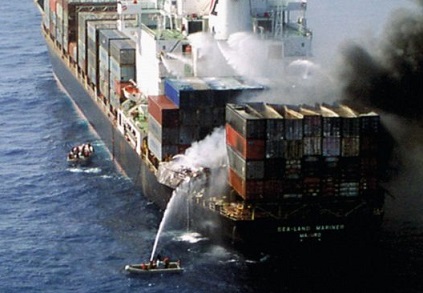
How to detect fire and extinguish at an early stage onboard a cargo ship?
No matter how we have progressed on tackling with firefighting on board, it can only take one container to start a fire onboard a large vessel. Cargo fires are not only an environmental concern but also cause large losses leading to severe business disruption and operator's reputational damage. Major fires on container vessels are among the largest hazards, as reported by the global shipping industry. We have highlighted below some key guidelines on detecting and extinguishing a fire at an early stage.
Fire in Cargo Hold : The initial action for dealing with a fire in a cargo hold will be the same regardless of whether a ship is at sea or in port. Upon discovering a fire, either visually or through the smoke detector, the Emergency Alarm must be sounded at once, and the Emergency Party mustered. The Chief Officer or the Senior Deck Officer onboard is to direct the Emergency Party. His actions are to be governed by circumstances, but he must first investigate the situation and assess the gravity of the fire.
Fire in Cargo Hold : The initial action for dealing with a fire in a cargo hold will be the same regardless of whether a ship is at sea or in port. Upon discovering a fire, either visually or through the smoke detector, the Emergency Alarm must be sounded at once, and the Emergency Party mustered. The Chief Officer or the Senior Deck Officer onboard is to direct the Emergency Party. His actions are to be governed by circumstances, but he must first investigate the situation and assess the gravity of the fire.


